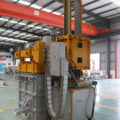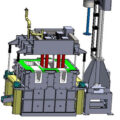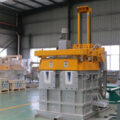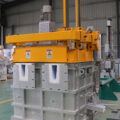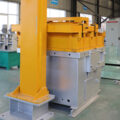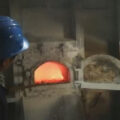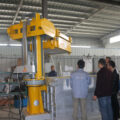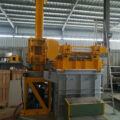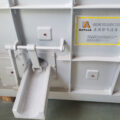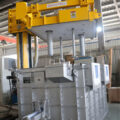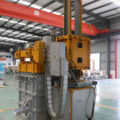The online aluminum degassing device adopts advanced high-silicon melting technology and has a long service life. The degassing rotor, heater protection sleeve and thermocouple protection sleeve all adopt ceramic manufacturing technology, which can meet the requirements of producing high-precision aluminum.
The online aluminum degassing device should be installed between the furnace and the casting equipment. It is used to remove hydrogen (H) and slag from molten aluminum. The online degassing device has dual functions: processing and heating. It serves the high-precision molten aluminum purification industry.
It is mainly used to remove hydrogen (H) and slag from molten aluminum.
It uses the principle of air flotation. The rotor sucks inert gas or a mixture of chlorine and inert gas into the molten aluminum and pulverizes it into dispersed tiny bubbles, which rise to the surface of the molten aluminum and complete the following process at the same time.
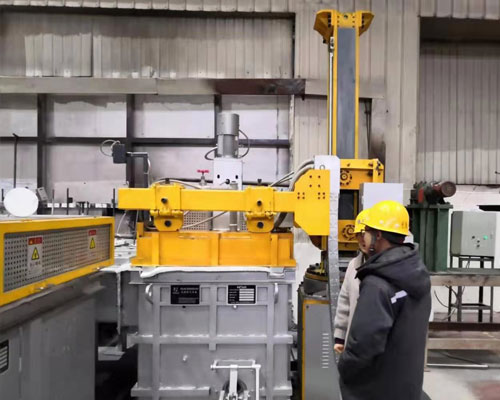
On-line aluminum degassing unit gas preheating can achieve excellent degassing and impurity capture. The gas preheating is achieved by flowing the gas through the channel formed by the spiral groove and the inner wall of the graphite cylinder. Then, the gas absorbs heat from the graphite cylinder, and the graphite cylinder is immersed in the molten aluminum. The preheating of the gas helps to maintain the small size of the bubbles by preventing the undesirable growth of the bubbles after the gas contacts the molten aluminum.
The attrition mixing of melt and bubbles can control vortex and reduce “residue”. The vortex is controlled by generating transverse and reverse velocity vectors in the melt. Through the special design of the reaction vessel and the arrangement of the gas dispersion mechanism, the velocity vector has no tendency to swirl. The advantage of this design is that the vortex prevents scum from re-entering the upper layer of the melt and reduces the residual bubbles at the outlet of the lower part of the reactor.
In addition, the volume of the reactor increases in a controlled manner from bottom to top to accommodate the increase in bubble volume (this is caused by the decrease in static metal pressure). This prevents gas bubbles from coalescing and maintains a high gas surface area for a long period of time for the total residence time of the gas in the reactor.

